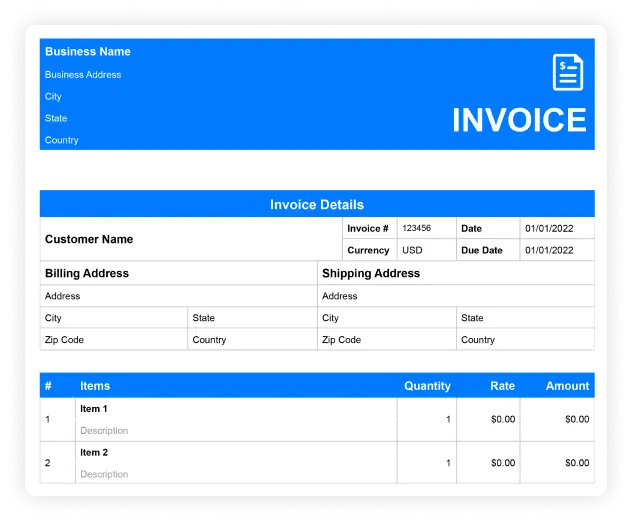Job-Work Invoice Format
A job-work invoice template is used to bill clients for specific jobs or projects, including labor, materials, and other expenses.
- Tracks labor and material costs for each project.
- Provides clear and detailed billing for clients.
- Ensures timely payment with structured invoicing.

Download Customizable Job-Work Invoice Format
Create Your First Customize Job-Work Invoice Template With CaptainBiz
What Should Be Included in Job-Work Bill Format
Client and Service Provider Information:
Include the details of both the service provider and the client to ensure clear communication and record-keeping.
Project or Job Details:
Provide specific details about the job or project completed, including the scope of work, materials used, and labor hours.
Cost Breakdown:
Include a detailed breakdown of labor costs, material expenses, and any additional charges, ensuring transparency in billing.
Invoice Number and Date:
Assign a unique invoice number and date for tracking and reference by both the client and service provider.
Total Amount and Payment Terms:
Clearly state the total payable amount, along with payment terms and deadlines, ensuring timely payment for services rendered.
Special Notes (if applicable):
Add any additional instructions or information related to the job, such as warranty information or follow-up services.
So what are you waiting for?
Frequently Asked Questions (FAQs)
A job-work invoice template is used by service providers to bill clients for labor, materials, and other expenses related to a specific job or project.
It should include client and service provider information, project details, cost breakdown, total payable amount, and payment terms.
Yes, job-work invoices can include a detailed breakdown of material costs along with labor charges to ensure transparency.
Including project details ensures that both parties understand the scope of the work completed and helps justify the costs incurred.
It simplifies billing, provides transparency in costs, and ensures timely payment, helping service providers maintain organized financial records.



